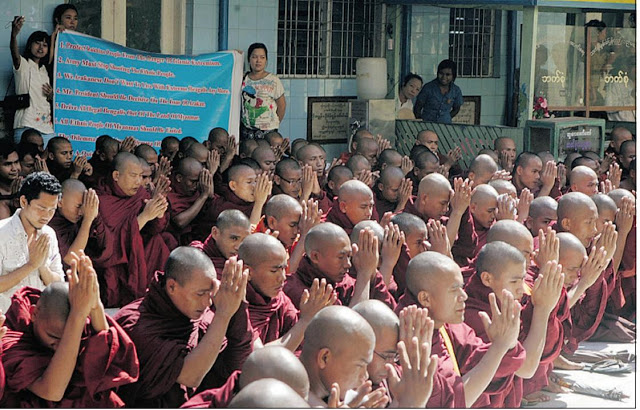A blacked out New York City skyline Monday night, as power goes down for much of the city
Source: Press TV
http://www.presstv.ir/usdetail/269487.html Monster Storm Sandy slammed into the East Coast Monday, killing at least 16 people, hurling a record-breaking 13-foot surge of seawater at New York City and knocking out power to over 6 million people.
The massive storm was downgraded from a hurricane after it barged ashore in southern New Jersey, bringing more than 85-mph winds and a roiling wall of seawater as it moved through New York City. It sent water surging into two major commuter tunnels and into subway stations and tracks. It was unclear how much water had come in.
The 16 deaths were reported in New Jersey, New York, West Virginia, Pennsylvania and Connecticut. Some of the victims were killed by falling trees. Police in Toronto said a woman was killed by a falling sign as high winds closed in on Canada's largest city.
The power was out for hundreds of thousands of New Yorkers and an estimated 6.2 million people altogether across the East, with the full extent of the storm's damage across the region unclear and unlikely to be known until daybreak.
The MTA cut power to some subway tunnels in lower Manhattan, after water came into the stations and tracks. The MTA couldn't say at this point how much damage had been done, and how much time it would take to restore everything to normal.
Consolidated Edison was prompted to cut power to part of the area to avoid storm damage. A large portion of Manhattan's FDR Drive was under water.
Reuters reported late Monday that there had been an explosion at a Consolidated Edison power station on the east side of Manhattan. Despite earlier reports, ConEd said on Twitter no one was trapped inside the plant.
New York Mayor Michael Bloomberg says backup power has been lost at New York University hospital and the city is working to move people out. The mayor delivered a news conference Monday night and said rain was tapering off in the city and the storm surge was expected to recede by midnight. The hospital complex is near the East River in an area of lower Manhattan where flooding has been reported.
The hurricane-turned-post-tropical cyclone, still a powerful, 900-mile-wide hybrid of several weather systems, sent 30-foot-high swells toward New Jersey, and as its eye passed over the shoreline, a surge as high as 10 feet tore into dunes and washed across boardwalks.
The state had evacuated all shore towns ahead of the strike, with Gov. Chris Christie telling residents who ignored the evacuation orders they were "both stupid and selfish."
"[It's a] very intense, very dangerous storm. People will die in this storm," Maryland Gov. Martin O'Malley said Monday. "So folks will need to mind their families, stay home and hunker down."
Even homes on stilts were threatened by the massive surge, and water was cresting dunes and boardwalks from Delaware's Rehoboth Beach to Jones Beach in New York.
New York Gov. Andrew Cuomo shut down all major New York bridges and schools, airports and the New York Stock Exchange were closed for Tuesday. North of Atlantic City, the storm was expected to be at maximum force from about 7 p.m. to 11 p.m., with gusts up to 90 mph, especially on ocean-facing beaches. For Long Island, Connecticut, and the rest of coastal New England, the high impact winds could last until midnight, according to The Wall Street Journal’s Weather Journal.
The National Guard was deployed along the densely-populated Atlantic Coast, and airports shut down Monday afternoon as the massive system churned in from the sea, creating 30-foot swells off the Jersey shore. The storm is on a collision course with a winter storm and a cold front, and high tides from a full moon make it a rare hybrid storm that could be felt all the way to the Great Lakes. Still, it could be worse – the storm could be well inland when evening high tide comes, some six hours after landfall.
Sandy has already been blamed for 69 deaths in the Caribbean before it began traveling northward, parallel to the Eastern Seaboard.
In Washington, President Obama urged the millions in Sandy’s path to heed warnings from local and state officials.
“When they tell you to evacuate, you need to evacuate,” Obama said. “Don't delay, don't pause, don't question the instructions that are being given because this is a powerful storm."
States of emergency were declared from North Carolina, where gusty winds whipped steady rain on Sunday, to Connecticut. Delaware ordered mandatory evacuations for coastal communities on Sunday, while Ocean City, Md., also was evacuated.
Tens of thousands of people were ordered to evacuate in anticipation of the storm, including 375,000 in lower Manhattan and other parts of New York City. At least 50,000 were ordered to evacuate in Delaware alone and 30,000 in Atlantic City, N.J., where the city's 12 casinos were forced to shut down for only the fourth time in the 34-year history of legalized gambling there.
Airlines canceled more than 8,962 flights and Amtrak suspended passenger train service across the Northeast for Monday and Tuesday.
New York and Philadelphia shut down their subways, buses and commuter trains Sunday night and announced that schools would be closed on Monday. Boston, Washington and Baltimore also called off school. In Washington and New Jersey, Metrorail and PATH train services were canceled.
In Connecticut, the number of power outages began climbing as the storm moved through the state. In New York City, 250,000 homes were reported to be without power. Fox News








































